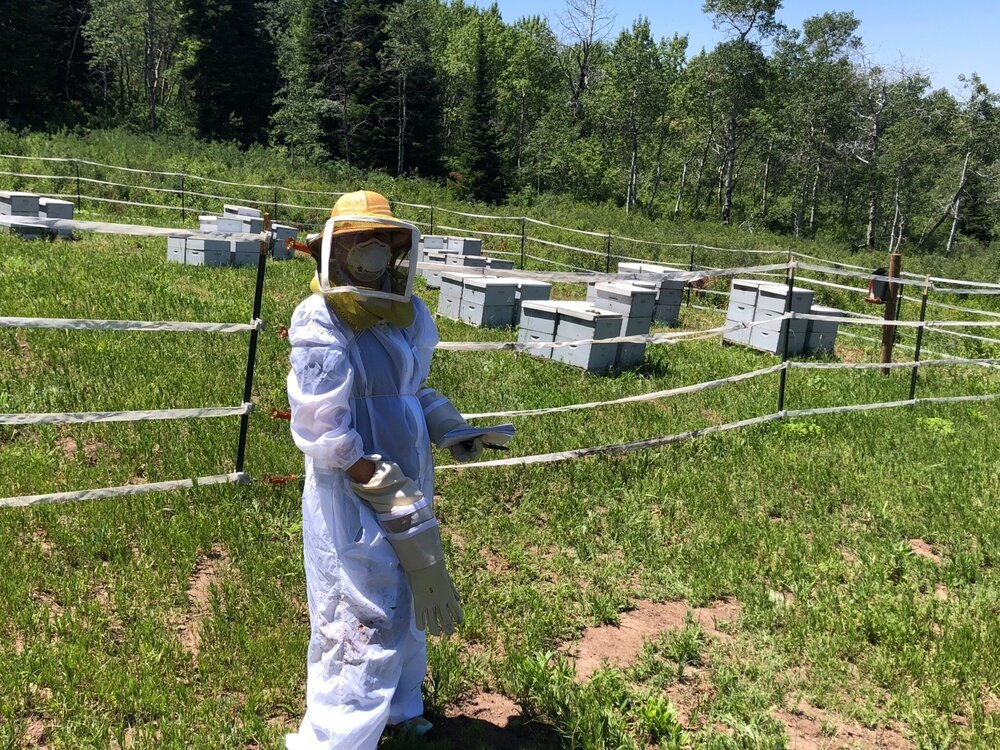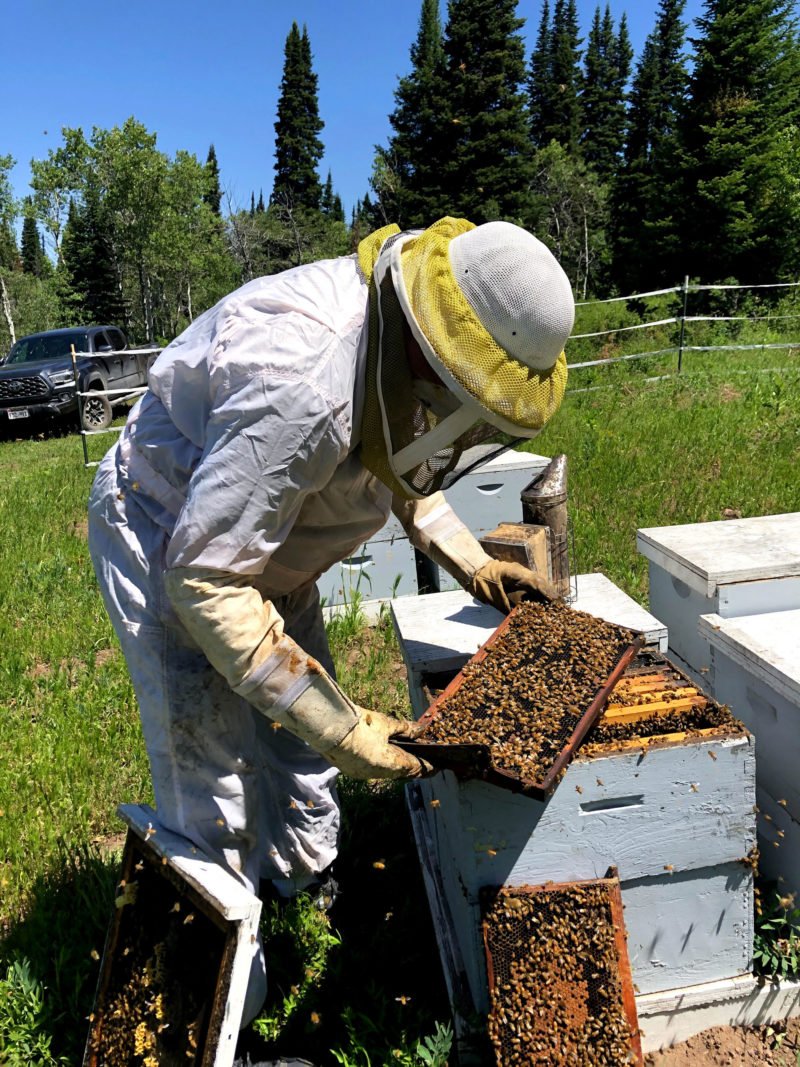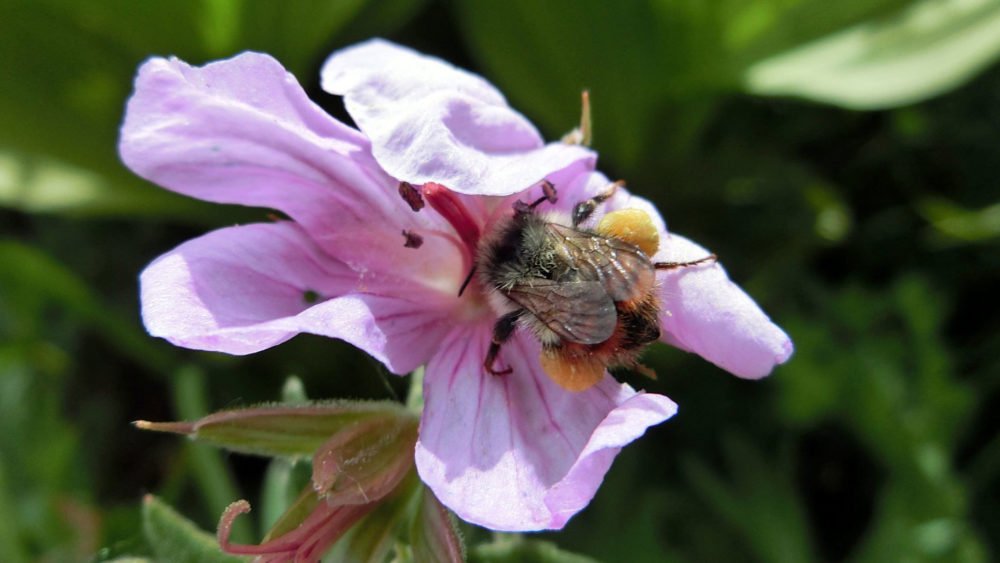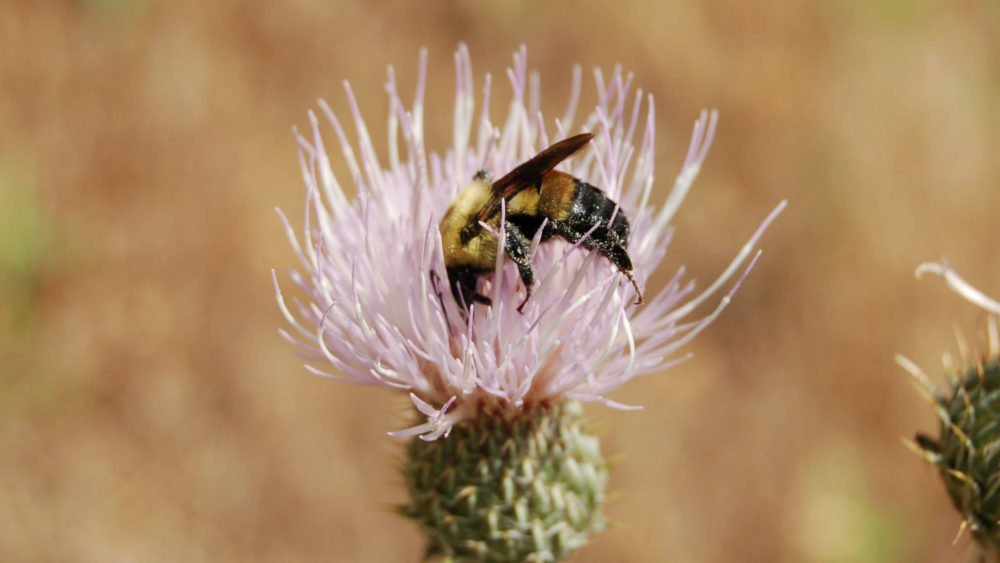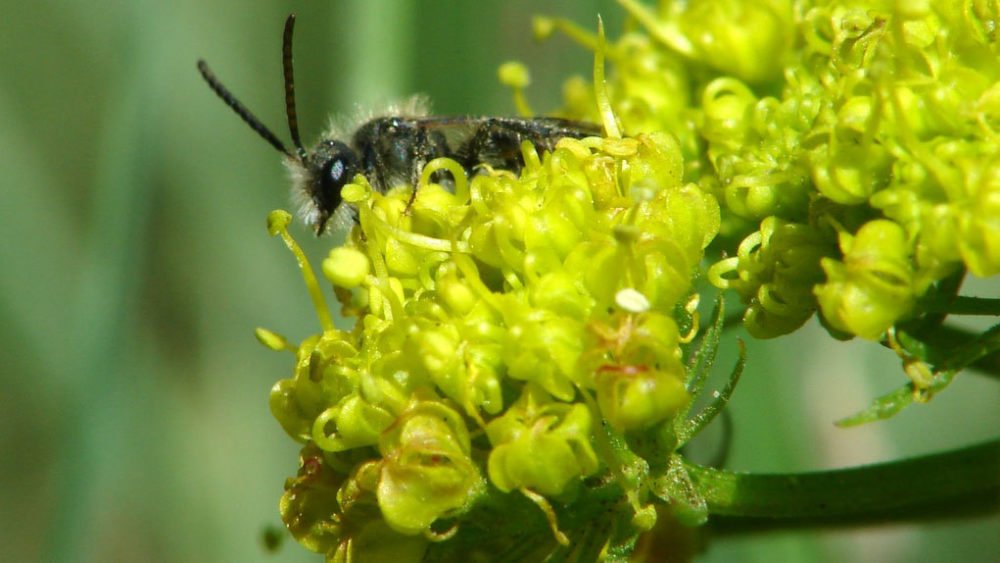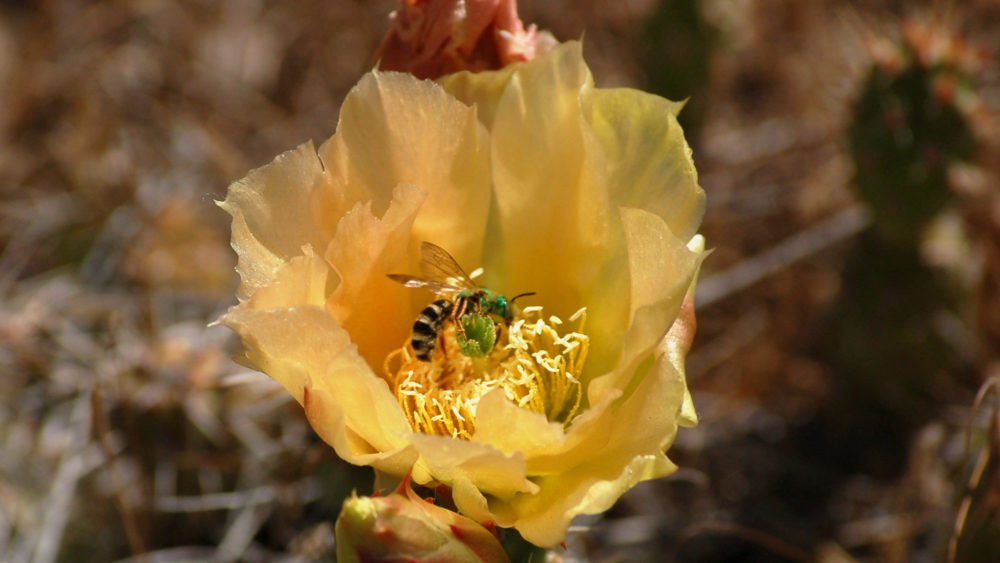Cover story: DU's Joy Burns: An enduring legacy of sport, learning and leadership
by Jennifer Oldham
Joy Burns. Photo by Kathleen Lavine for Denver Business Journal
The article was originally published in Denver Business Journal ⸱ February 22, 2018
Outfitted in a crimson and gold sweatshirt and her trademark chocolate brown bouffant, Joy Burns is easy to spot at University of Denver gymnastics meets, hockey games and fundraising events.
Teams show off their championship-winning athletic prowess at the $84 million Daniel L. Ritchie Center for Sports and Wellness, including the Joy Burns Ice Arena, which bears witness to Burns’ indelible impact on the capital city’s largest private university.
In the entryway to the ice arena is a stone carving of a pony-tailed female hockey player. Inside, trophies bearing aspiring hockey players proud achievements such as “Silver Stick Regional Squirt A Champions, 2016” and “12 and Under National Champs 2012” underscore DU’s deep ties to the community. Down a corridor lined with large windows opening into performance spaces, signs tout Pepsi and Coors— sponsors Burns helped attract decades ago.
“Sports give you the opportunity to find out how far you can push yourself – it teaches you about teamwork,” Burns, 90, said recently in an interview at her Cherry Hills home as her Westies, Trouble and Katy Kat, barked in the back yard. “You can’t learn that sort of thing about yourself in a classroom, you have to be out there competing — that’s what life is all about.”
Burns’ legacy as a pioneering businesswoman on the DU campus and across the Denver metro area is broad and deep. Endlessly energetic, she often spent 50 hours a week on university business alone as a Board of Trustees’ member from 1981 to 2017.
Along the way, she developed and managed the Burnsley Hotel, and later her husband’s real estate business, foregoing sleep many nights. Burns is credited with a powerful, consistent and quiet leadership style that ensured DU’s long-term fiscal and academic success.
She became the trustees’ first female chair in 1990, at a time when debt, dramatic enrollment shortfalls and deteriorating infrastructure threatened the institution’s very future. Working with Ritchie as chancellor, she led the DU board to reimagine the university’s aging campus and raised millions of dollars to fund a sweeping building campaign.
Their team laid the foundation for an outreach effort that ultimately increased the institution’s endowment to $711 million from $24 million. New facilities and money to provide scholarships boosted enrollment and attracted world-class athletes.
“Most academic institutions operated in the traditional way that didn’t involve long-term thinking,” Chancellor Emeritus Robert Coombe said. “Most academic institutions operated in the traditional way that didn’t involve long-term thinking,”
“Under Joy and Dan we developed long-term models, and we would roll out budgets for five years in advance so we could build resources that enabled us to do really large projects,” he added. “Her presence made all the difference for us.”
Born in Wortham, Texas, in 1927, Burns earned a degree in business from the University of Houston. In 1956, she moved to Denver and met her late husband, Franklin L. Burns, at a golf tournament. On their first date, they attended a hockey game at Franklin Burns’ alma mater – the University of Denver.
Bored with a life of traveling, tennis and fashion shows, Burns in 1972 joined the DU Women’s Library Association to raise money for what became the Penrose Library. In 1976, she helped found the University of Denver Pioneer Sportswomen in a quest to bring parity to womens’ athletics at the university.
“We had a long way to go,” Burns recalled, sipping coffee as a fire roared in the hearth. “The women had such a meager budget – they had $50,000 – and when the guys went to tournaments they got to fly, while the women had to drive.”
Architect Mark Rodgers said: “You see Joy in many surprising, influential ways on campus.”
Colorado’s centennial year also proved a momentous one for Burns, who became one of several dozen founders of the Women’s Bank.
Its mission: To teach women how to manage a checkbook and save money and to provide them loans. At the time, women couldn’t obtain credit without a man’s signature, leaving them unable to become entrepreneurs. The bank proved pivotal to many women’s careers and long-term fiscal stability.
“We helped promote women throughout the community,” said who left a job as acting president of a competing bank to head the Women’s Bank. “Bankers all across the city said to some of their women who were junior officers, ‘Don’t get any crazy ideas about going over to that Women’s Bank because I’m going to promote you — I’m going to increase your salary.’ ”
With many men ridiculing it as a silly venture, the bank’s stock initially sold for $8 a share. Investors sold the institution in 1997 for $187 a share. Even today, women stop its founders on the street and tell them the bank ensured they could buy a home or start a business, or helped them weather the early 1990s recession without claiming bankruptcy, Orullian said.
Friends for a half century, Orullian recalled the time she taught Burns to fish on the Blue River. The truck and camper the women were to spend the night in got stuck on a slippery road.
“There we were, Joy in her in designer jeans and her bouffant hairdo, and we all pushed it and got covered in mud,” Orullian said. “She was a good sport.”
In the mid 1980s, Burns participated as a founding member of The Women’s Foundation of Colorado with a mission of allowing women and girls to earn a livable wage. She mentored women in the group, connected them with the old Denver establishment, and provided them a place to meet at the Burnsley Hotel, which she developed in the late 1970s into a five-star, all-suite establishment.
“I really remember her energy,” said Dottie Lamm, a former first lady who also belonged to the group that formed the foundation. “Her influence as an advisor, connector and convener lasted a long time.”
Burns also put her team-building skills to work as the first female chair of the Denver Metro Convention Visitors and Business Bureau, today known as Visit Denver. Working with general managers of the Visitors and Business Bureau, today known as Visit Denver.
Working with general managers of the region’s hotels, she raised the city’s profile among businesses and tourists nationwide by putting the right people on the board and getting them on the same page, Burns recalled. The group also played an instrumental role in the development of the Colorado Convention Center.
“We worked really hard to create tourism for Denver – until then people just came to the airport and went straight to the mountains — now they just keep coming to our city and that’s good for hotels,” Burns said. “It’s always been fun being on the ground level and to see where people take it once it gets started.”
Burns’ passion for Denver is also visible at the Broncos’ stadium. A devoted fan who has attended games since the 1960s, she played an instrumental role in the campaign to build the 76,125-seat facility as the only woman to receive a gubernatorial appointment to the Metropolitan Football Stadium District
Burns’ contributions are also drawing the community to DU – and potentially future students – to the Robert and Judi Newman Center for the Performing Arts. Here, there are twice as many restrooms for women as for men just off the Joy Burns Plaza. To keep families together during intermissions, both are located on the same side of the light-filled area at Burns’ request, said University Architect Mark Rodgers, who worked with Burns and Ritchie to remake DU’s campus.
“If you are using that space over and over again, something as simple as not having to wait in line for the restrooms keeps you coming back,” Rodgers said on a recent campus tour. “You see Joy in many surprising, influential ways on campus.”
Dan Ritchie, who is receiving a DU Founders Medal this year along with Joy Burns, said: “During my time at DU, I never made a significant decision without checking with Joy Burns.”
Burns’ mentored female students by promoting hands-on learning opportunities at the Joy Burns Center, which houses the Fritz Knoebel School of Hospitality Management and the Franklin L. Burns School of Real Estate and Construction Management. At the hospitality school, wedding guests can watch students prepare their meal through display windows that open into the kitchen.
“It appealed to her to celebrate the students,” Rodgers said, gesturing to a second window into the prep area for guests to see the action as they enter the dining room. “This in effect is a hospitality laboratory – that differentiation is part of Joy.”
Today, Burns continues to run D.C. Burns Realty & Trust Co. and sits on the Denver Center for the Performing Arts Board and the Metropolitan Football Stadium District board. She drives at 15-year-old Montero SUV with Joy B license plates and signs texts and emails with a honeybee emoji. She displays the feisty energy that friends and colleagues cite as key to her multi-faceted accomplishments.
“They’ve made DU relevant on the national stage – our kids love her,” said Peg Bradley-Doppes, vice chancellor for athletics, recreation and Ritchie Center operations, who took the job 13 years ago after admiring the duo’s vision from afar.
“We have learned so much from her – her work ethic as a shrewd, talented business person who is so giving with her time and energy,” Bradley-Doppes added. “You just want to be better for her.”
Beekeeper Dennis Cox checks his hives in Strawberry Valley, Utah in July. JENNIFER OLDHAM / YALE E360
“Honey bees are super-foraging machines and they are literally taking the pollen out of the mouths of other bees and other pollinators,” said Stephen Buchmann, a pollination ecologist specializing in bees and an adjunct professor at the University of Arizona. “They have huge extraction efficiency — with the waggle dance and how quickly they can mobilize — and they can very quickly take down the standing stock of pollen and nectar.”
About half of 72 studies addressing competition between managed bees and wild bees analyzed in a 2017 literature review found managed bees negatively impacted native pollinators by consuming limited floral resources. Of 41 studies that looked at the potential effects of managed bees on wild bees through changes in plant communities, 36 percent reported negative impacts and 36 percent positive results, with the remainder finding mixed or no impacts. None of the experiments were conducted with the number of hives currently being permitted on federal lands.
Some bee experts argue that no amount of honey bee hives is safe on public lands. A 2016 study published in the journal Conservation Letters found a single honey bee hive extracts enough pollen in one month to rear 33,000 native bees. If this figure is multiplied across apiaries with 100 hives, such as what is permitted in some national forests, entomologists say it could imperil the ability of wild pollinators to sustain their populations.
“Who doesn’t have an advocate in this is the native bee — there’s no money in it,” said Jim Cane, a retired USDA bee scientist and coauthor of the 2016 research.
In July, conservationists filed a petition with Agriculture Secretary Sonny Perdue and U.S. Forest Service Chief Vicki Christiansen, asking that federal agencies require detailed environmental studies for apiary requests and that those studies document potential impacts on native wildlife and plants. These applications currently elicit as much scrutiny as those to mow a lawn at a district office, or to host a “motorcycle enduro ride on existing roads,” according to proposed rules published in the Federal Register.
Private farm land that generations of beekeepers relied upon for summer forage is being converted to wheat, corn, and soybeans
But as scientists study and conservationists debate the ecological impact of these honey bee introductions, commercial apiarists say they have no choice but to use public land.
“I lose yards every year because a subdivision is going up,” said Cox, a fourth-generation beekeeper who parks 592 of his 5,700 hives on national forests northeast of Salt Lake City each summer.
“We are running out of land,” he added. “We’ve reached the carrying capacity for managed bee hives in the U.S. — without access to public lands our livestock could be in peril.”
The pollinator habitat crunch carries long-term implications for the U.S. food supply. Honey bees are responsible for one in every three bites of food Americans consume and contribute $15 billion annually to the value of the nation’s crop production. Millions of bee colonies crisscross the country each year on semi-tractor-trailers to pollinate cranberries, melons, broccoli, blueberries, and cherries, as well as to produce honey.
Dennis Cox moves 592 hives into national forests in Utah each summer, including these in Uinta-Wasatch-Cache National Forest. JENNIFER OLDHAM / YALE E360
The growing interdependence between the nation’s food security and managed pollinators comes amid a double-digit decline in honey bee populations. Commercial beekeepers lost 44 percent of their colonies from April 2019 to this past April, with reductions in the summer of 2019 the highest ever recorded. At the same time, the proportion of crops dependent on pollinators is accelerating. Beekeepers are being forced to begin each season with double the amount of hives in anticipation of harrowing losses. The mounting number of colonies managed by the nation’s 1,600 or so commercial beekeepers would require about 158 million acres of summer forage, an area greater than Montana and Minnesota combined.
“We are literally talking about where would we keep 2.5 million honey bee colonies, each with 40,000 to 50,000 individual honey bees,” said Clint Otto, a Jamestown, North Dakota-based research ecologist for the U.S. Geological Survey who studies pollinator habitats.
Private farm land in the northern Great Plains that generations of beekeepers relied upon for summer forage is being converted to wheat, corn, and soybeans, much of it for biofuels. Farmers previously set aside such ground in exchange for subsidies provided by the federal Conservation Reserve Program. Acreage enrolled in the initiative shrunk by 30 percent in the last decade to 22 million acres due to reductions in federal funding and because high commodity prices for corn and soybeans made cultivating crops more profitable. The drop-off prompted renewed interest in housing hives on public lands in the West.
“We are proposing to put as many apiary sites as possible across different Utah National Forests,” wrote Brian Burkett, a manager at South Dakota-based Adee Honey Farms, in a 2017 application to the U.S. Forest Service to house 9,000 hives in at least five national forests. “We are desperately trying to get out of pesticide areas due to the loss of our bees.”
The application and others included in the cache of documents released under the FOIA — obtained by the Center for Biological Diversity and the Grand Canyon Trust — show that federal land managers are grappling with how to handle such unprecedented requests. Without a nationwide policy governing apiary size, and with scientific uncertainty over the impact of these introductions on native species, each district is left to decide whether millions of honey bees endanger local ecosystems.
Studying pollinators and how they interact in the wild is time consuming, expensive, and tedious'
Officials determined in the 1980s that apiaries only need a “categorical exclusion” — a designation that calls for little or no analysis and public notice. At that time, less was known about native bees and how they interact with honey bees.
Studying pollinators and how they interact in the wild is time consuming, expensive, and tedious. Scientists agree more analysis is needed to better understand if honey bees’ voracious appetites strip the land of food for native bees; if pollinators can transmit diseases and parasites to one another; and if honey bees’ preference for invasive plants will alter ecosystems.
Researchers are working on two projects in Utah they hope will answer these questions.
Adee Honey Farms, the nation’s largest private beekeeper, contributed 60 colonies toward a four-year project in the Manti-la Sal National Forest designed by the Forest Service and Brigham Young University to determine honey bees’ impacts on native bee populations. Manti-la Sal managers wrote on the forest’s website that the results, expected this year, could “serve as a model” for other districts. The service’s Intermountain region, where Adee still wants to summer its bees, denied interview requests for this article.
Scientists at a USDA native bee lab in Logan are searching for answers to how pollinators interact at 7,500 feet in Utah’s Strawberry Valley. Here, quaking aspen and towering pinyon pines tremble in a summer breeze alongside 48 buzzing honey bee hives and eight native bumble bee colonies housed in plastic crates. Snowberry bushes, goldenrod, and horsemint — a nutritious mix that makes for healthy bees and honey that doesn’t granulate — surround the site on a cattle ranch. A control site hosting only native bees is located in a national forest in the region.
Utah is home to 1,100 wild bee species, including (clockwise from top left) sweat bees, mining bees, brown-belted bumble bees, and yellow-fronted bumble bees. COURTESY OF TONY FRATES AND WILD BEECOLOGY
Back in the lab, scientists will identify pollen removed from the honey bee and bumble bee hives at the Strawberry Valley site. This information will help pinpoint the flowers each species visit, said Diana Cox-Foster, the lab’s research leader.
To gain insight into native bee activity, Cox-Foster and her colleagues will use Dixie-Cup-shaped “bee bowls” and nets to capture endemic species and cameras to study foraging rates. The data will help scientists quantify forage needed by different species, gain insight into the ecosystem’s carrying capacity, and determine if pathogens move between species. It will also provide information on whether honey bees compete with wild bees for food.
The multi-year study, funded by Project Apis m., a nonprofit funded in part by beekeepers, Costco, and The National Honey Board, was “politically hot enough that we needed to have stakeholder approval across groups,” Cox-Foster said, including from the American Honey Bee Producers, the American Beekeeping Association, the Forest Service, and Xerces. It began this spring.
“We know competition happens, but we don’t know how intense it is, how much it affects native bees, and how much it varies from year to year,” said Vincent Tepedino, an entomologist who specializes in bee behavior, ecology, and rare plant pollination who worked at the USDA bee lab in Logan for 26 years.
Standing in a 2-acre garden behind the bee lab, Tepedino and Cane pointed out how honey bees from hives in suburban back yards overtook flowers carefully tended by scientists in the lab’s garden.
The scientists point out the honey bees — the insects with orange bands on their abdomens — that were flying from one lavender Phacelia flower to another. Several wild bee species, including a gray-striped ground-nesting mining bee and a furry bumble bee, vied for space on the spiky blooms.
“There are no feral honey bees in Utah — the winters are too long and cold. This is essentially the most intact native bee fauna in the U.S. It’s worth protecting.”

